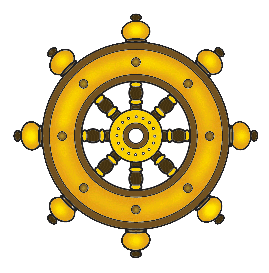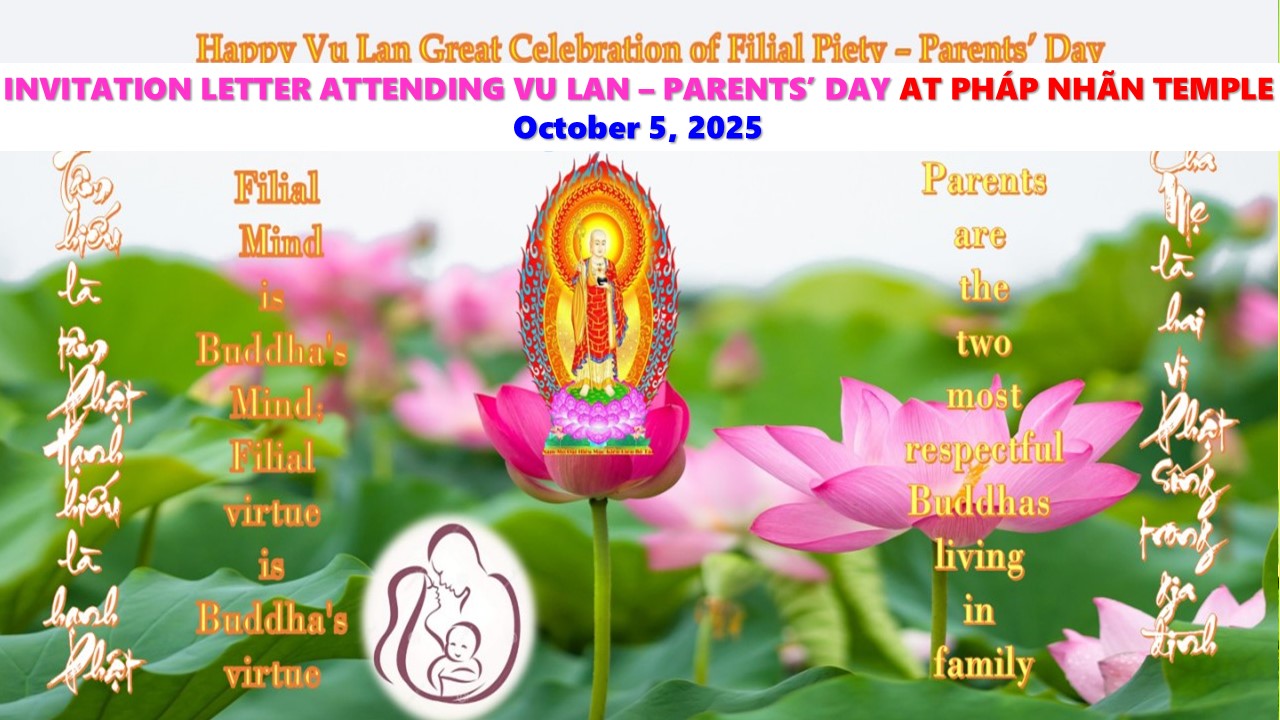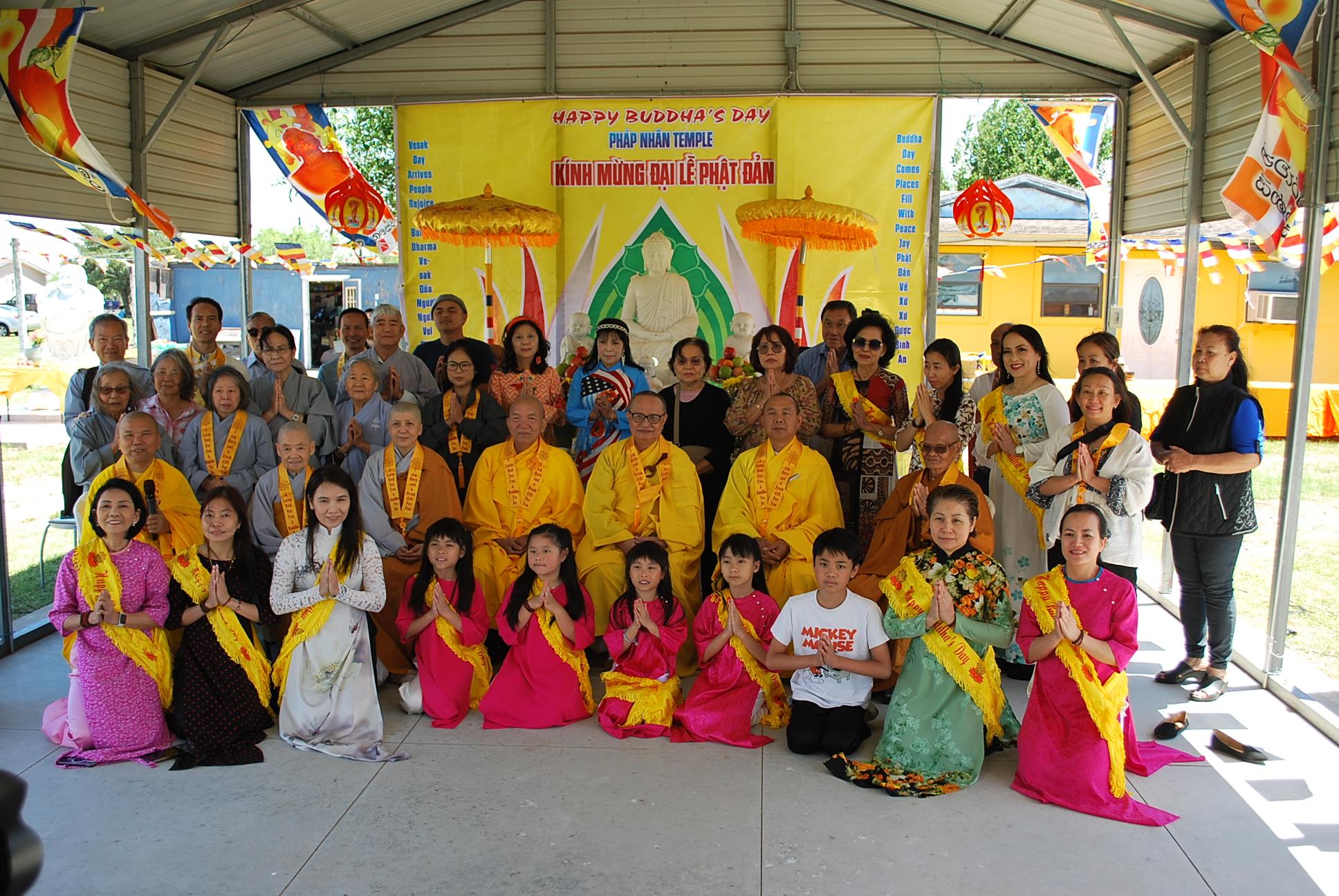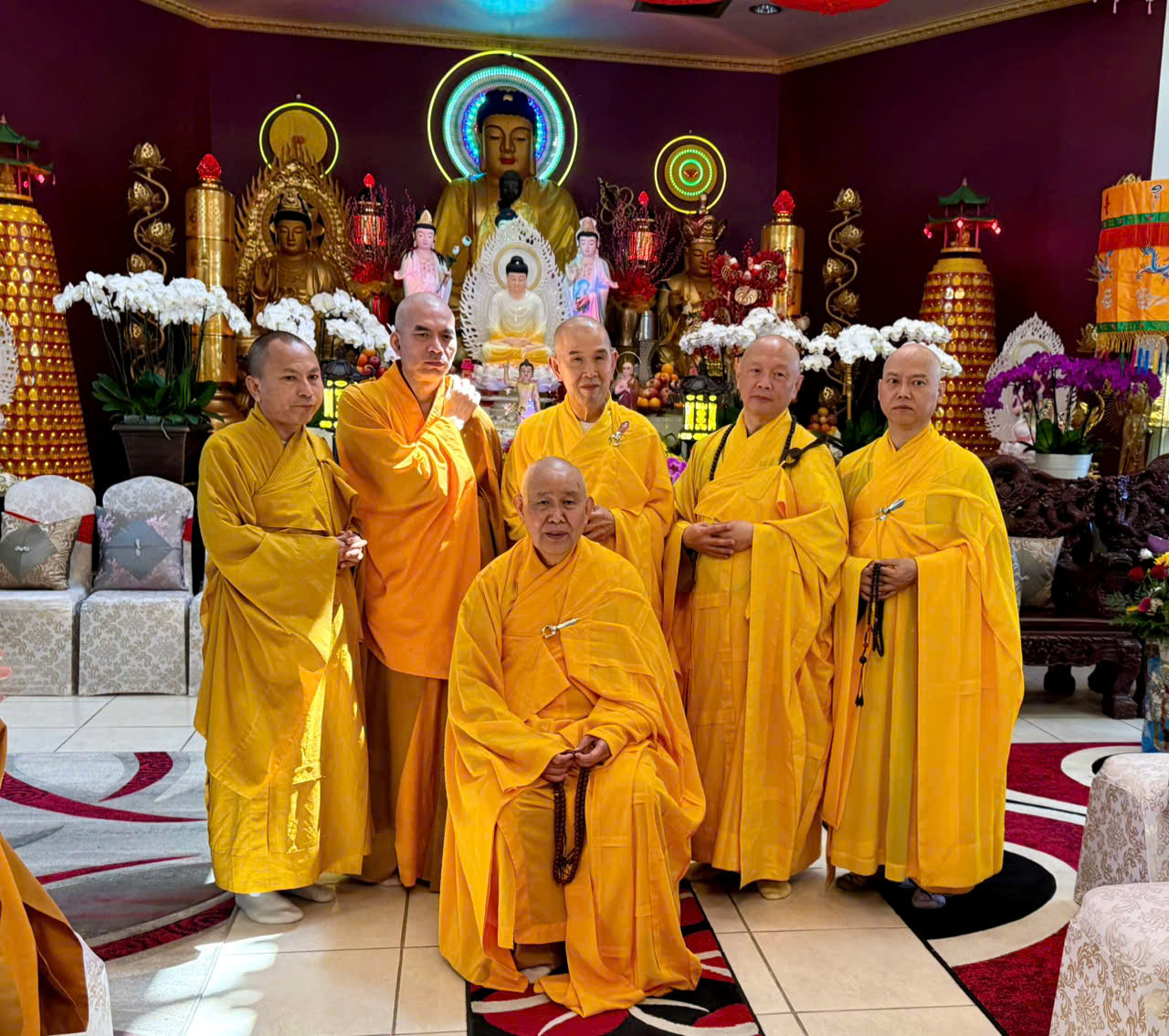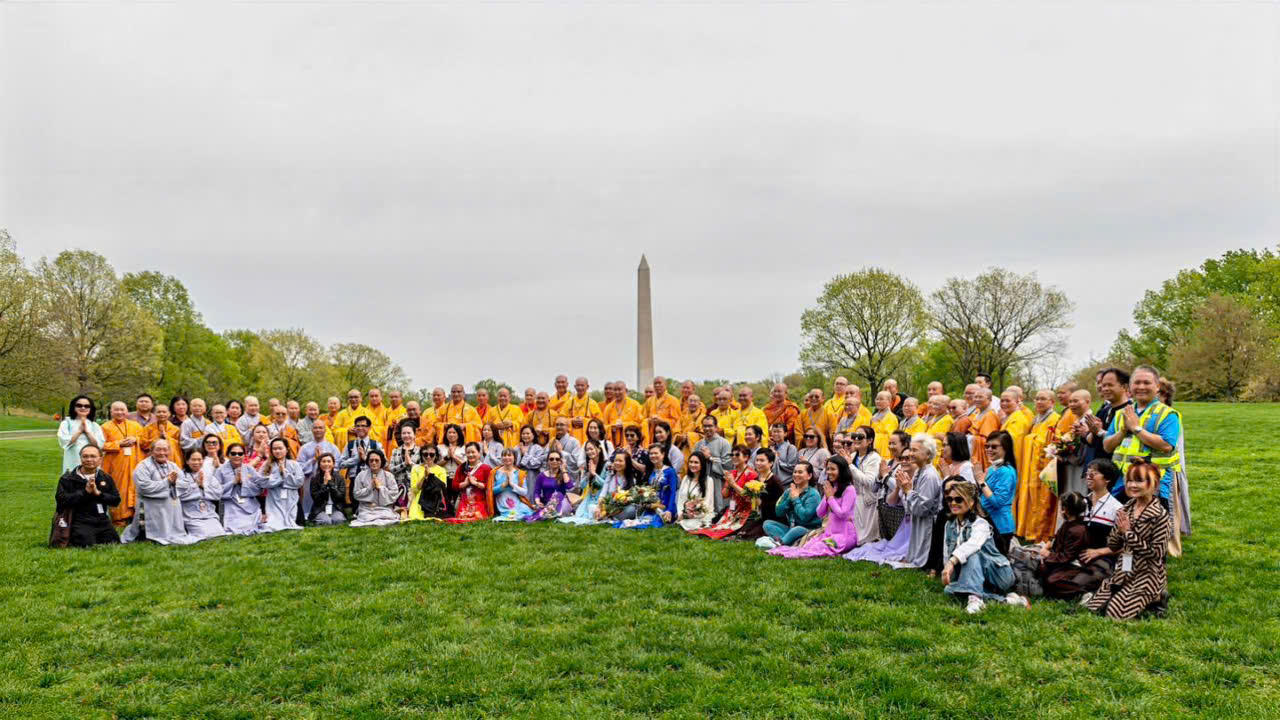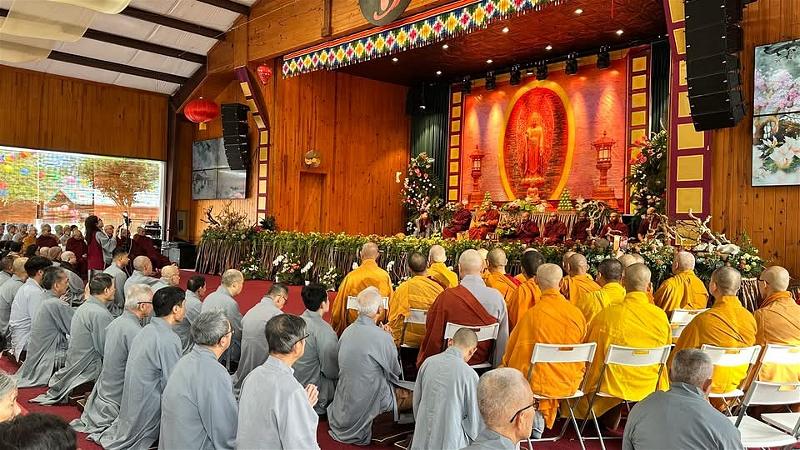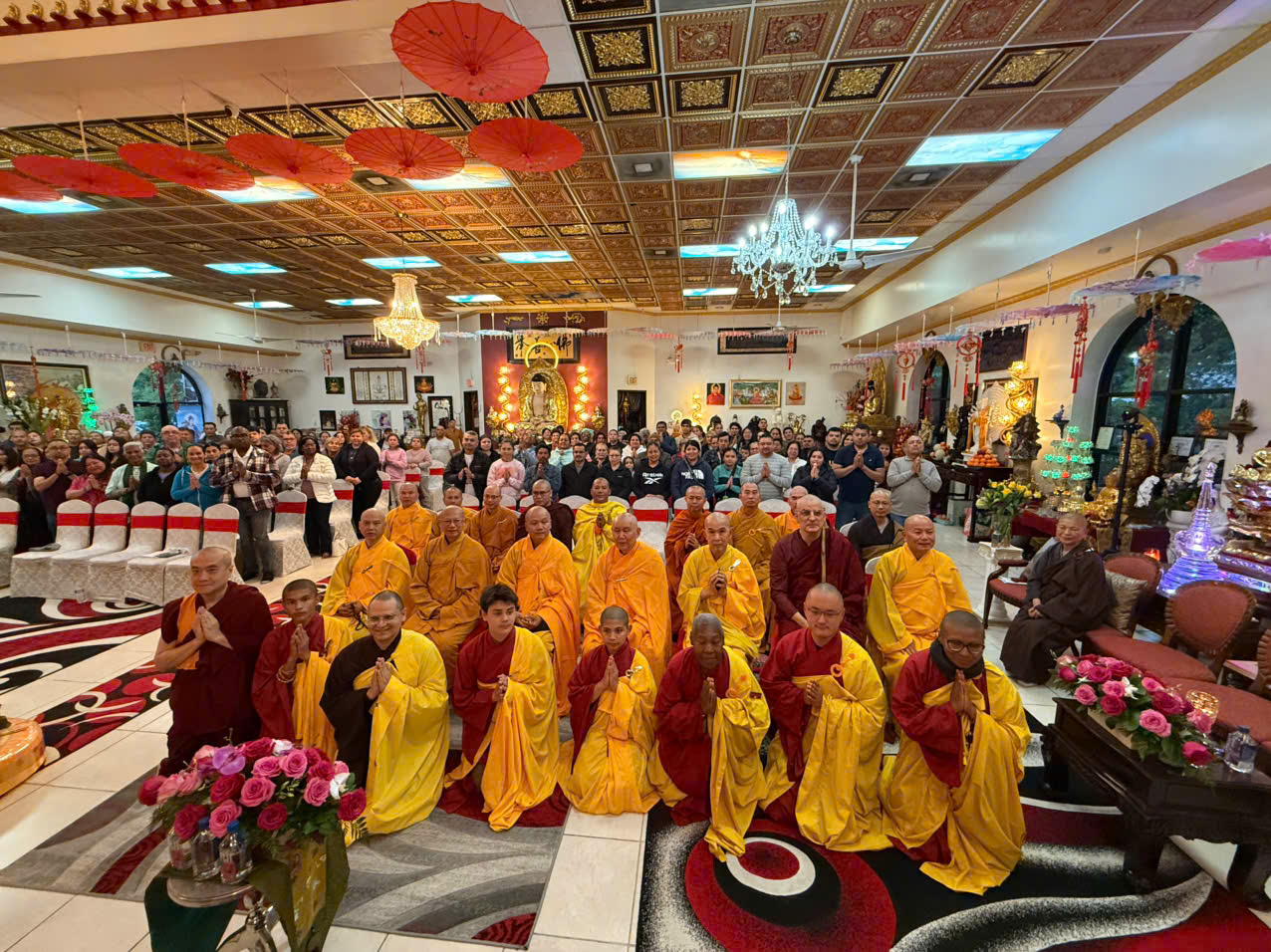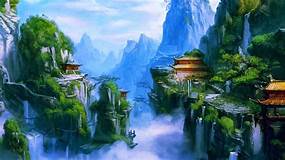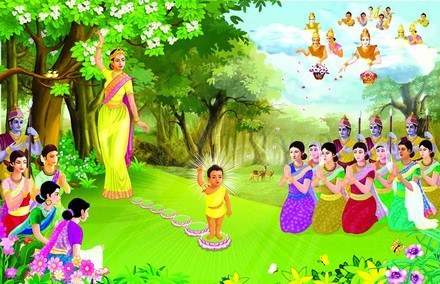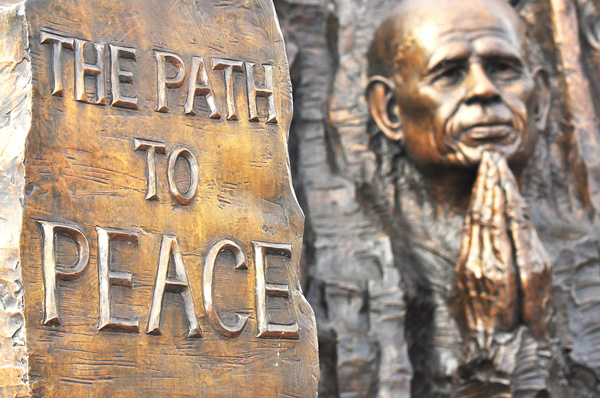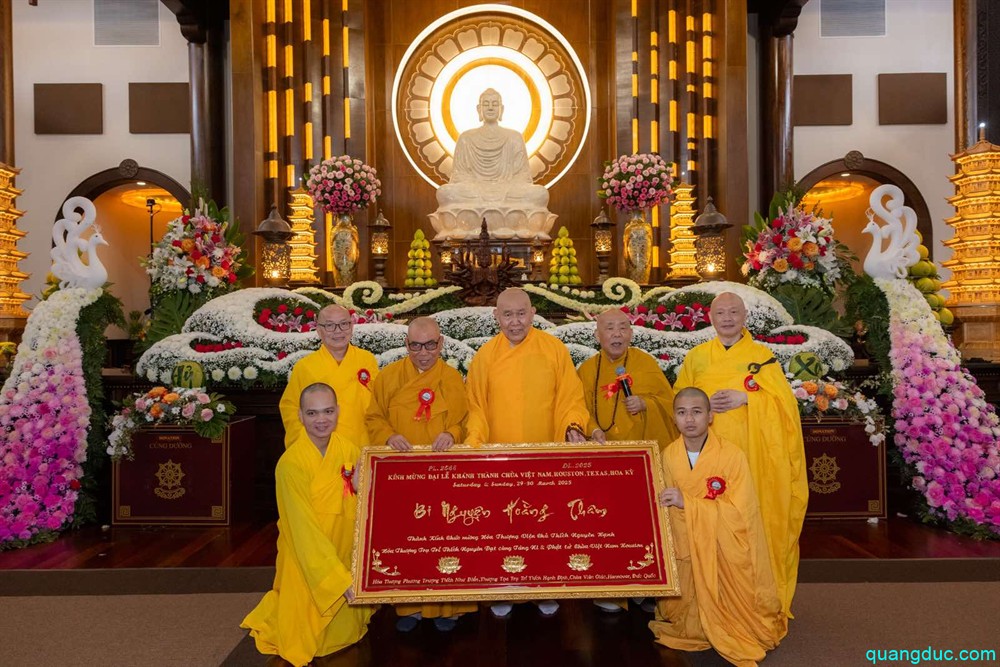HT. Thích Như Điển translated by Bhikkhuni Giac Anh
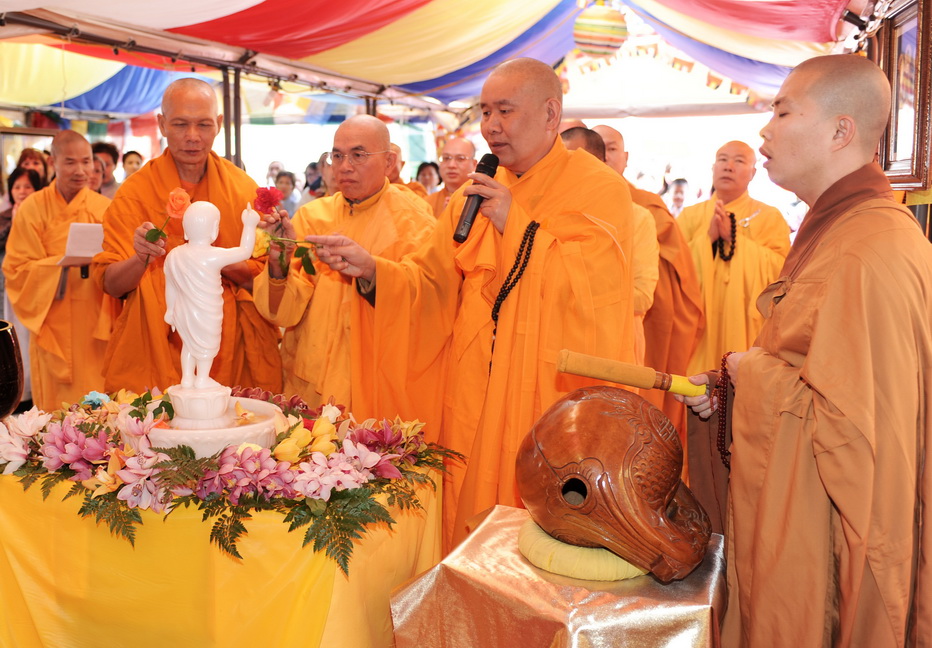
DHARMA TALK ON THE OCCASION OF 2646TH VESAK DAY, BUDDHIST CALENDAR 2566
Homage to Shakyamuni Buddha
Most Venerable, Venerable and all Buddhist followers,
The 2646th birthday of Prince Siddhartha has come to all Buddhist followers all over the world. As Buddhists, we are not allowed to forget this important day, either practicing as a layperson or monastic ordaining. This is because the Lord Buddha came into this world with a sole purpose: “opening up to all sentient beings to be able to see and attain the wisdom like the Buddha”. This is a noble vow of a Bodhisattva in the final stage before attaining Buddhahood.
Buddha came to this world, and attain fully Nibbana after 80 years. Therefore, while commemorating the Buddha’s Birthday, we are also celebrating Enlightenment Day and Parinirvana Day. As a result, the 2566th year in Buddha’s Calendar is the period of time after he passed away. However, the date of birth, the ordination day, and the enlightenment day have not been aligned between the Theravada and Mahayana until today. Since the very old days, some countries such as China, Vietnam, and Japan all celebrated Buddha’s birthday on the 8th of the fourth month in the lunar calendar. However, the word Vesak means full moon, and the moon is not full on the 8th day of the lunar month; therefore, later in Vietnam, Most Buddhist temples often chose to celebrate this day from the 8th to the full moon of the fourth lunar month. Meanwhile, Japan, a country practicing Mahāyāna Buddhism, still celebrates Buddha’s Birthday on April 8th, using the Gregorian calendar instead of the lunar one. Japanese name this day “Hana Matsuri”. Many other countries practicing Theravada follow their long traditions. As Buddhism accounts for the vast majority of the population, Thailand, Laos, and Cambodia celebrate Vesak Day also as the beginning of a new year. Even the celebrations based on the lunar calendar in some other Asian countries such as Tibet, Bhutan, Mongolia, China, and Vietnam are still not the same. They can be a few days apart, sometimes even a whole month apart, especially during the leap months.
Of people who follow Mahāyāna Buddhism, the majority of them believe that Prince Siddhartha was ordained at the age of 19, then practiced asceticism for six years in the Himalayas. The following years were a gap period, then he became Buddha at the age of 30. Finally, He gave teaching for 49 to 50 years and attained Nirvana when he was 80 years old. Meanwhile, Theravada believes that Prince Siddhatta was ordained when He was 29 years old, with six years of asceticism practice, and attained enlightenment at 35 years old. Therefore, according to Theravada, Buddha only turned the wheel of dharma for 45 years. This theory is nowadays accepted by the majority of scholars of both Mahayana and Theravada. Today, the Buddhist countries, either Mahayana or Theravada, all adopt the same year of birth and death; hence there are still many differences regarding other events in His life. Therefore, we often say that this year is the 2566th year. That means His life lasted 80 years.
Gautama Buddha is a historical person, which means his life had birth, marriage, and children, and then He renunciates the lay life to join the path of asceticism, and finally attain enlightenment named Gautama Buddha. If Prince Siddhartha was born on April 15, 624 B.C. (2646-2022), it means that the day he was born in the garden of Lumbini, India, was the early 7th century B.C. However, world scholars today still disagree with this theory. Some say He was born in the 6th century, and many even think He was born in the 5th century B.C. Even though there are still unclear facts in the study of Gautama Buddha’s life, He is still a historical Buddha thanks to his presence in this world. With that logic, the United Nations has recently recognized the Day of Vesak.
After 49 days of meditating under a Bodhi tree in Bodh Gaya and attaining awakening, the Buddha was wondering whether or not he should teach the Dharma to others. Finally, the Devas urged him to stay and turn the Dharma wheel. Meanwhile, Mara also insisted him to attain Nirvana. This is because if the light of enlightenment had appeared, it would have been difficult for Duratama Mara to exist in this world, while the Buddha had promised: “When I could bless the Laymen, Laywomen, Novice, Bhikkhu, and Bhikkhuni, I would go into the Nirvana”. This was the promise that Buddha fulfilled when he was 80 years of age.
Under the Bodhi tree, the light of truth has been shed on the world today about the Four Noble Truths, the Three Dharma Seals (Impermanence, Suffering, Non-self), the 37 Factors of Enlightenment, and so on. It was obvious that while traveling, our Buddha preached many different sermons to many people from different classes of the then Indian society. His teachings differed depending on the background, level as well as circumstances, etc. He served the ultimate purpose of bringing enlightenment and liberation to mankind and the devas.
Now we can learn all spirits of Mahayana, Theravada, Tantra, etc., although the practice differs in each country, the general teachings are: the Four Noble Truths, the Twelve Dependent Originations, 37 Factors of Enlightenment, Impermanence, Suffering, Non-self, etc., are the fundamental foundations of these traditions. Later, when Buddhism spread to the North of India where Tantra already existed, as in Tibet, Bhutan, Mongolia, etc. here, Buddhism brought doctrines that were practical to local customs, weather, and social background; therefore the Buddhist ancestors in these countries delved into the field of Kalachakra in mantra practicing. Meanwhile, the Emptiness theory in the forms of Madhyamaka, Prajñā, Mahàprajnàparamitàsatra, etc. was more adaptable to other Buddhist countries such as China, Japan, Korea, and Vietnam.
Today, Buddhism is seen on the five continents of the four oceans, showing clearly the nature of each imported faction and the practice of Westerners. For example, current Westerners are very active and have a lot of difficulties with the spiritual side in everyday life. Therefore, they seek Buddhism to help them resolve the conflicts of their family, how to avoid depression, how avoid the domination of their occupation, etc., They need meditation practice to regain their balance. Since then, the Teachers of today’s Buddhist schools in Western society often practice Mindfulness Meditation, were to teach their students to count their breaths, in Sanskrit it is called Anapanasati. This is a core meditation practice that counts breaths, guides students to control their breathing, and brings all activities back to mindfulness. For example, if we are eating, to be aware that we are eating; if we are doing, to be aware that we are doing; if we breathe in and out, to be aware that we are breathing in and out, etc.
Subsequently, the Teachers taught the students Samatha and Vipassana mediation. With this type of meditation, when Buddha was still alive, He taught the ordained monks and nuns and guided them the first level of the Stream Enterer or One Return in the four Arahantship. Later, there are other types of meditation such as contemplating that the body is not sanitary, the mind of an ordinary person is like a swinging monkey, viewing the Dharma as without-self, contemplating all the feelings are painful; therefore, the current medication studies in the West is very diverse. Not to mention the Tao Dong Meditation or the Linji Meditation of China, Korea, Japan, and Vietnam has been and will be taught to all local Buddhists, helping the development of Buddhism to bloom. It is a joy for us, Buddhists to hear and know about these historical changes.
Pure Land Buddhism is still a part of today’s Western societies but it was created mostly thanks to Asians ourselves through the Buddhist practice of Amitabha. Sometimes, we still find European Buddhists practicing in Japanese, Chinese, Korean and Vietnamese temples, but this number is very small. This is because Westerners prefer Meditation to Pure land. It is not hard to understand as Meditation started in the time of the Buddha. However, Pure Land was also taught by the Buddha, but this school was only developed later through the Chinese, Korean, Japanese and Vietnamese monks. It was rarely heard in Theravada Buddhism, especially about Buddha chanting with hundreds or thousands of participants, not as a modern event in Asian Mahāyāna Buddhism countries.
We Asians are mostly affected by ancestor worship in China, so most Buddhism chanting is accompanied by other rituals such as the anniversary of birth, death, etc. Meanwhile, Westerners find these practices alien. They still learn about this but it is hard to adapt it to Western culture. Hopefully, Westerners will understand the blend between Buddhism and these aforementioned rituals.
When we came to bring Buddhism to the Western world, the most difficult task was blending it in the local cultural and religious life. Because integration doesn’t mean assimilation. Being assimilated means we will lose our national identity. This means that foreigners from Asia must integrate and at the same time must preserve and promote their original culture, which is mostly accounted for by Buddhism. Therefore, when we meet local governments or other religions, we often give the following comparison. The presence of Christianity, Protestantism, and other religions can be seen in the cultures and civilizations of the current European and American countries. For example, Christianity stands for the fragrance of a rose, while Protestantism is no different from the fragrance of carnation, and our Buddhism, which was a foreign religion imported into Western countries from the East about 200 years ago, is a lotus flower. Though growing up in dirty mud, this kind of flower brought wonderful sweet fragrances. Currently, in our religious gardens in Western lands, when spring comes, there is not only one rose or carnation that shows their fragrance, but also blooming lotus flowers that contribute to the beauty of our religious gardens.
At the moment, in Asia, we are celebrating the 2646th Buddha’s birthday and the 2566th year of the Buddhist calendar at temples as well as online Buddhist forums. In Europe, Ukraine is drowned in war, killing and injuring many people. More than 10 million people fled the country, mostly women and children, and men had to stay and fight with the Russian army. War does not do anyone a favor, but some people, because of their greed, anger, and delusion, are constantly reeling with disputes and hatred, resulting in a world with worse poverty, mourning, and ruin. The Buddha also taught us that, “Hatred does not cease by hatred, but only by love; this is the eternal rule”. There will be a winning side and a losing side, but we all know the actual results. Therefore, we Buddhists should, in the name of compassion, call for the renunciation of hatred in order to build a stronger country and nation through compassion and forgiveness. Only then will the world soon be at peace.
The Covid 19 pandemic has spread all over the globe and hasn’t shown any signs of easing after over 2 years long. Its variations still have developed in various forms, killing millions of people, and infecting hundreds of millions of others. Countless people have lost their jobs, production has been suspended. It makes people suspicious of the government’s prevention methods and the effectiveness of the drugs. However, whatever happened, we should be grateful to the governments for helping to reduce the spread of the pandemic, appreciate the sacrifice of the doctors and nurses who have forgotten themselves and the happiness of their families to throw themselves into this pandemic, saving the world from the pandemic to go back to normal life. These are right actions that we should not forget. In addition to prayings for help, we should show repentance for the negative karma of each and everyone, who has been blamed for this day when our planet is pushing near its edge. Hence, natural disasters, floods, earthquakes, and tsunamis have risen everywhere. From now on, we should fulfill the Buddha’s teaching that:
“To avoid all evil,
to cultivate good,
and to purify one’s mind,
this is the teaching of the Buddhas”.
From Germany, on the day of VESAK, we put our hands together and pray for the peace of each individual and the world. Sincerely pray for all of us always apply compassion and forgiveness to practice, so that all mankind can be safe and have longevity.
Thank you all.
* This message was translated from Vietnamese to English by Bhikhuni Giac Anh.
Bài Pháp Thoại Nhân Lễ Phật Đản Sanh Lần Thứ 2.646, Phật Lịch 2566

